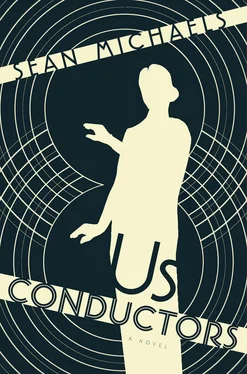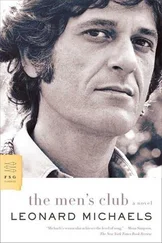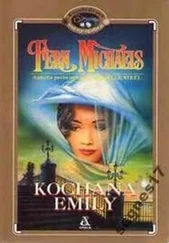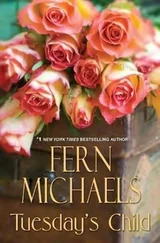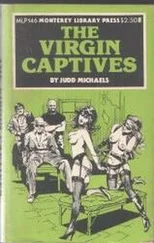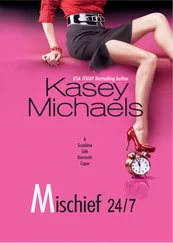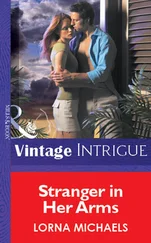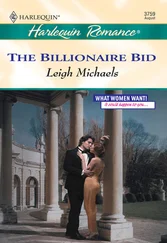“Who is that?” I murmured.
Pash continued down the gangplank. It did not seem as if he was going to answer me. He put his hands in his pockets and lowered his head. I followed. “Pash?”
He looked back over his shoulder. “The enemy.”

I HAD MY DEBUT on January 24. I performed in the Plaza Hotel’s ballroom for scientists, academics, journalists and the rich. Many of the attendees’ names were familiar from Pash’s quizzes: Edsel Ford, Charles S. Guggenheimer, Vincent Astor. I spent much of the evening hiding from Szigeti behind piles of oysters, wedged into corners by Mr Downes from the Times or Mr Klein from the Evening Post . At the demonstration, Sergei V. Rachmaninoff and Arturo Toscanini sat in the same row, and my eyes were drawn to the composers’ faces. These faces were grim. I watched them as I played Schubert’s “Ave Maria,” Offenbach’s “Musette.” From all around — gasps, murmurs, applause. But Rachmaninoff and Toscanini did not smile, did not yawn. They were imagining, I am certain, the chopping and splintering of ten thousand cellos, violins, and trumpets, rendered obsolete by the theremin’s ethereal tone.
Later, outside the ballroom, the composers greeted me like an old friend. Rachmaninoff called the performance “singular.” Toscanini said it was “magnificent.” Yet in both men’s voices there was this faint faraway tremor, the shiver of men who are shaking hands with their executioner.
I spent much of the next three months on tour: deep winter in Cleveland, Akron, Philadelphia, Detroit, Chicago. Back to New York, where I removed my mittens and made my first appearance at Carnegie Hall. For every demonstration, I brought three or four different devices as well as the Y-shaped loudspeakers I call the cypresses, for their shape. I usually began with an introduction to electric conductivity, passing current through solutions in large crystal bowls. Charged with electricity, the acid chromate changed from summer orange to emerald green; the tourmaline pink permanganate solution went instantly as clear as glass. My apothecary vials were like a jeweller’s cache.
I also rigged up a basic music-stand theremin whose antennas are hidden within the stand itself, invisible. (Although the instrument’s sensitivity is dramatically reduced, it’s an elegant illusion.) I brought my illumovox, with its spinning wheel of coloured slides, and set it beside an electric lantern at the foot of the stage, tilted up like a footlight. When connected to a theremin, it responds according to movements around the pitch antenna. As the music changes, the illumovox whirs, colour wheel spinning, and throws different shades of light onto the player’s face. The low notes are bathed in burgundies, the highs in glimmering grass greens.
Throughout this early tour, I was frustrated by one unavoidable fact: there were just two thereminists in all of North America — Pash and me. We would roll into town with a small truck full of devices and yet I was forced to work with traditional accompanists — pianists and string quartets. The music was fine, certainly, but I was hampered by a lack of human resources. Pash’s itinerary did not allow me to pause and recruit theremin pupils, let alone to train them.
He planned it this way, I think, because he liked being on stage. Pash was a manic-depressive spy, shunning and craving the spotlight. He could spend all week slinking in alleyways, in telephone boxes, but come Friday night he would put on his tuxedo and stride into the clouds of applause. He would introduce himself as Julius, or Yuri, or George, or Goreff, or Goldberg. I still called him Pash. Depending on whom we were speaking to, he was variously my business partner, my assistant, my friend, my cousin, or my ambiguous “liaison.”
I do not know who taught Pash to play the theremin. I suppose he taught himself. The day we met, in Berlin, he already knew. I arrived in the cavernous basement of the Deutsche Oper, celestes and concertinas under heavy canvas sheets, and there was a man in a chocolate-brown suit leaning on one of my space-control devices. His grin sparkled in the electric lights. The man from the consulate didn’t seem to want to touch him. “Call me Pash,” Pash said. He smacked me on the shoulder. He said, “We are two men at the beginning of our careers.”
He asked me if I wanted to hear a song. I did not know what to say. “What kind of song?” I said.
“Your kind of song.”
“What do you mean?”
He hit the switch on the side of the theremin. DZEEEEOOOoo . I took a step back. I had never met another thereminist before. I had thought there were no other thereminists. He waggled his fingers like a magician.
He played Saint-Saëns’s “The Swan.” It was as if a stranger was lifting a pen to a clean white piece of paper and replicating my signature. I could not move. This time “The Swan” did not sound melancholy or serene; it sounded mortal. Like something that will die.
“Well?” he asked when he was finished. He had ruffled black hair, pale eyes; he played without vibrato.
I was still in shock. “When did you learn?”
“Sometime between seeing you perform for the second and third times.”
I did not ask him which organization had obtained one of my devices for him to practise on. I asked him simply who he was.
“I am your temporary friend,” he said.
In America, Pash was my accompanist. But behind closed doors he remained the man who gave me papers to sign, who interrogated me about whose hands I had shaken and how forcefully, who mucked about with seals and photographs and cheques and who announced one evening, just as we were polishing off two bowls of apricot compote, that he had extended our visas.
“How long?” I asked.
“Six months,” he said, swallowing. “Aren’t you going to thank me?”
Katia would not have thanked him. She would have stared at him with her gaze like drawing pins. Our parting had been so stilted it was almost theatre. I wondered how I would tell her I was staying. I wondered what Sasha was working on, with Ioffe, in Leningrad. I imagined them staying late at the laboratory, graphing the curves of new data, uncovering secrets of space and air, becoming closer, like father and son, while I rummaged in the pockets of America.

IN THE SUMMER OF 1928, I opened the first Theremin Studio at New York’s Plaza Hotel, on West 59th Street. When I moved in, the suite consisted of a pair of bedrooms, a kitchen, a study, a dining room and a parlour. The place was full of air, well ventilated, like small gusts of wind were moving through the rooms. Everything was mauve, from the wallpaper to the lampshades. I could step to the bay window and see into Central Park, watch the swarms of insects that rose up from the woods at sunset.
Pash insisted that my home be my workspace: the personal and professional hidden behind the same heavy curtains. I used the study as my primary research site, an array of hanging wires and whirring instruments, manuals piled on the floor as they arrived from Leningrad. The dining room became our storage area: we set our plates on top of theremin cabinets, used the cypresses as a buffet. I stripped the apartment’s largest closet, a walk-in pantry off the kitchen, of shelves, then nailed an etching of Leung Jan to the wall — an old man, kicking the sky. I used it as my private kwoon, twice and thrice daily, lunging into the corners where a previous tenant had piled potato sacks. I had intended to keep the parlour free for receiving guests, but its large size made it the place for real tinkering. Pash would arrive most nights before midnight, carrying an attaché case like a cake box in both hands, with papers to sign. I would be on hands and knees in the parlour, wrestling with a mechanism, grease congealing in the mauve carpet. The chandelier glimmered above us. This was America.
Читать дальше
